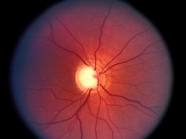Learn More About Eye Exam - Atricles
Learn Why Regular Sight Tests are Very Important
Regular eye examinations are extremely important in order to maintain the health of your eyes. You only have one set of eyes so looking after them is imperative.
 Attending your local optician for regular examinations not only means keeping your prescription up to date (if you wear contact lenses or glasses), but also means that certain eye conditions such as glaucoma and cataracts which can case visual loss can be detected at an early stage.
Attending your local optician for regular examinations not only means keeping your prescription up to date (if you wear contact lenses or glasses), but also means that certain eye conditions such as glaucoma and cataracts which can case visual loss can be detected at an early stage.
 Cataracts are on of the commonest causes of loss of vision. In the west, they rarely develop to cause very advanced visual loss, since they are normally operated upon relatively early. In some developing countries, cataracts main the commonest cause of preventable blindness.
Cataracts are on of the commonest causes of loss of vision. In the west, they rarely develop to cause very advanced visual loss, since they are normally operated upon relatively early. In some developing countries, cataracts main the commonest cause of preventable blindness.

Glaucoma is an insidious disease which normally has no symptoms until it is very advanced. The peripheral vision can be lost as a result of damage cased to the optic nerve by glaucoma.
Visual Acuity Assessment
The visual acuity (VA) is a measure of how fine your vision is, and is measured in adults by your ability to read various sized letters in a chart presented to you at a specified distance.
 The smaller the letters you are able to read, the better your visual acuity. So, the smaller the bottom number on your Snellen Acuity measurement, the better your visual acuity is.
The smaller the letters you are able to read, the better your visual acuity. So, the smaller the bottom number on your Snellen Acuity measurement, the better your visual acuity is.
Most charts are presented at a distance equivalent to 20 feet or 6 metre. That is why the VA is often written, for example as 20/20 or 6/6. The charts most commonly used are Snellen Charts, and so this measurement is often referred to as 'Snellen Acuity'.
A Va of 6/6 is equivalent to what many may call 'perfect vision' or '20/20 vision'.
A VA of 6/12 means that at 6m, the smallest letter you can see can be seen by somebody with '20/20' vision at 12 metre. Hence, 6/12 acuity is not as good as 6/6.
A VA of 6/4 means that at 6m, the smallest letter you can see can be seen by somebody with '20/20' vision at 4 metre. Hence, 6/4 acuity is better than 6/6. Some people therefore can see better than 20/20.
Objective Refraction
This is the initial part of the assessment of the refractive error and astigmatism (if any). The objective measurement can be taken using an automated machine called an 'autorefractor' or manually using an instrument called a 'retinoscope'.
 Retinoscopy is a highly skilled task and requires good co-operation from the patient for the best results. This gives your optometrist an overall guide to the refractive error of your eyes.
Retinoscopy is a highly skilled task and requires good co-operation from the patient for the best results. This gives your optometrist an overall guide to the refractive error of your eyes.
If you already have glasses, then your old prescription can serve as a starting point from which the examination can be progressed. Your optometrist is best qualified to decide how he or she carries out your refraction.
Subjective Refraction
 This is the second part of the refraction. Your optometrist will ask you simple questions like 'which is clearer - position 1 or 2 - or question like 'is it clearer with or without' - as the optometrist shows you different combinations of lenses.
This is the second part of the refraction. Your optometrist will ask you simple questions like 'which is clearer - position 1 or 2 - or question like 'is it clearer with or without' - as the optometrist shows you different combinations of lenses.
This part of the examination allows your optometrist to 'fine-tune' the exact prescription you need. (In younger children who cannot communicate, this part of the examination is often not possible).
At the end of the test, you may be asked to look at letters or figures against red and green backgrounds (the duochrome test) or you may be asked to read letters having had a lens inserted which blurrs the vision.
Once your optometrist has completed this part of the examination, he or she can determine what would be the optimal prescription to prescribe for you.
Examining Your Eyes
A full clinical examination is carried out to ensure the health of your eye is maintained, and any early signs of disease (if present) are identified.
 The clinical examination includes measurement of the visual acuity (VA), a detailed assessment of the eye lids, conjunctiva, sclera (white part of the eye), cornea, anterior chamber (front section of the eye), pupil, iris, and pressure reading. The back of the eye is also examined using a special lens or ophthalmoscope. This enable assessment of the retina, optic nerve, and blood vessels inside the eye.
The clinical examination includes measurement of the visual acuity (VA), a detailed assessment of the eye lids, conjunctiva, sclera (white part of the eye), cornea, anterior chamber (front section of the eye), pupil, iris, and pressure reading. The back of the eye is also examined using a special lens or ophthalmoscope. This enable assessment of the retina, optic nerve, and blood vessels inside the eye.
A thorough examination is highly recommended. We therefore recommend that you visit an Optician for an eye examination on a regular basis.






